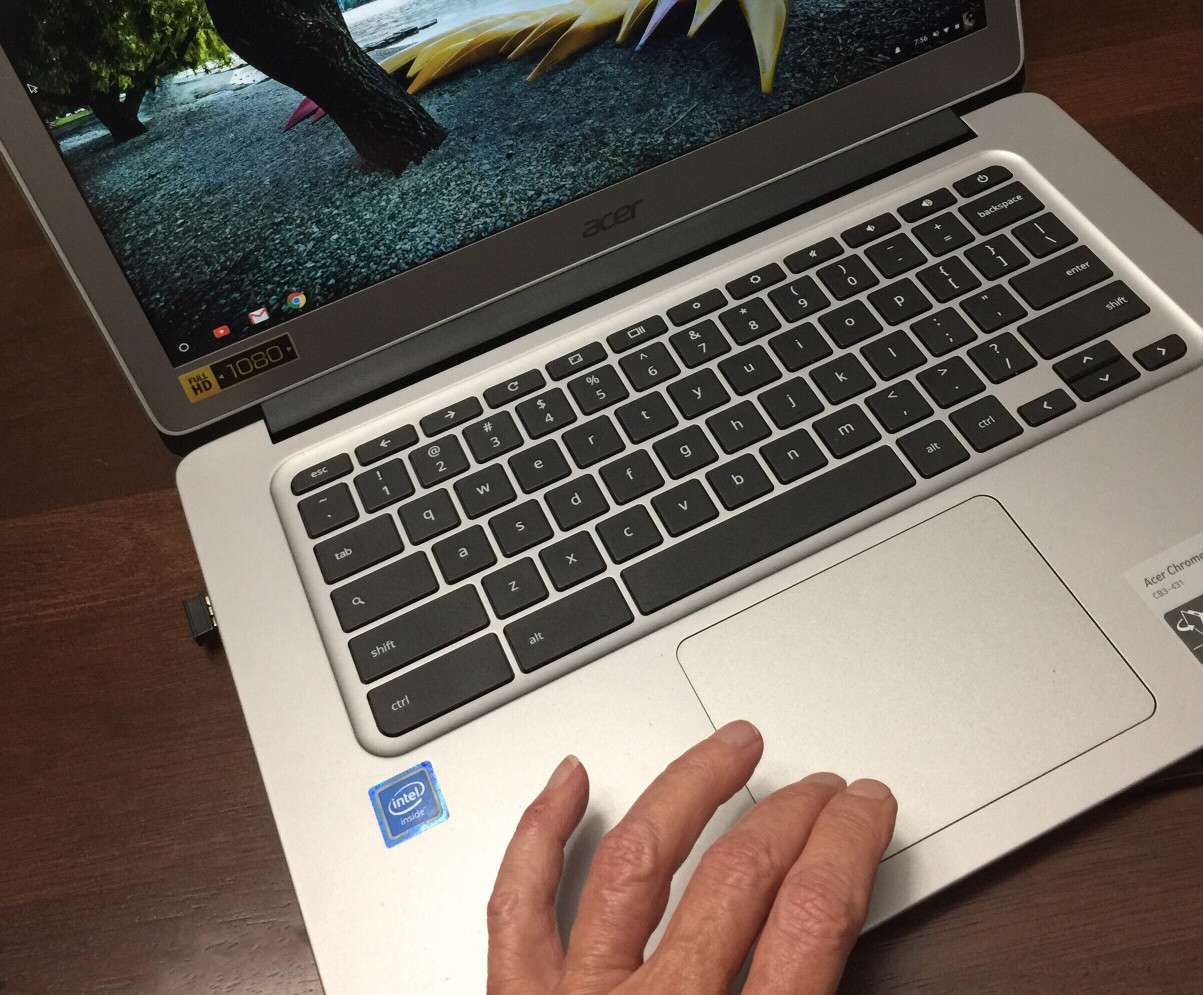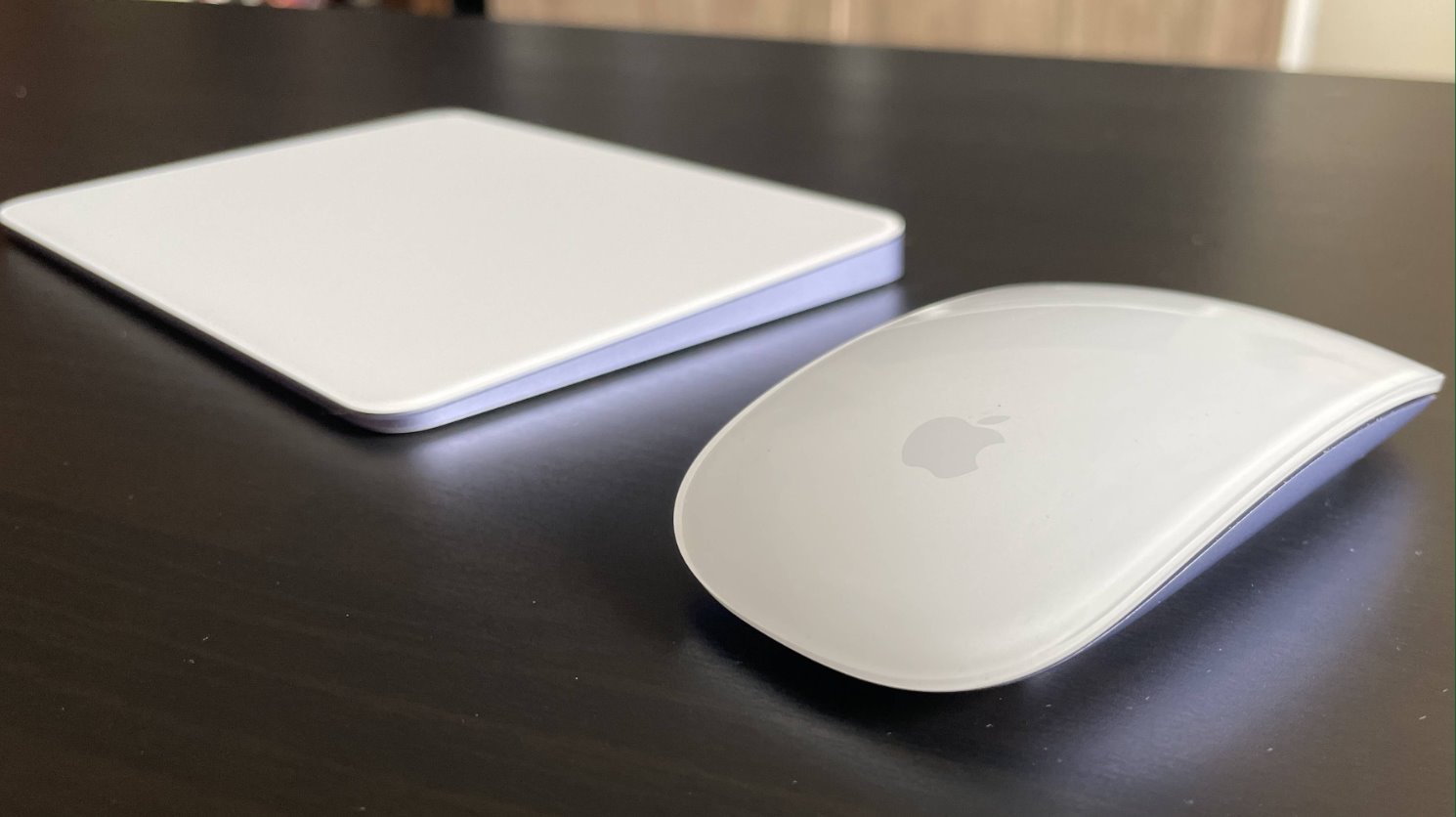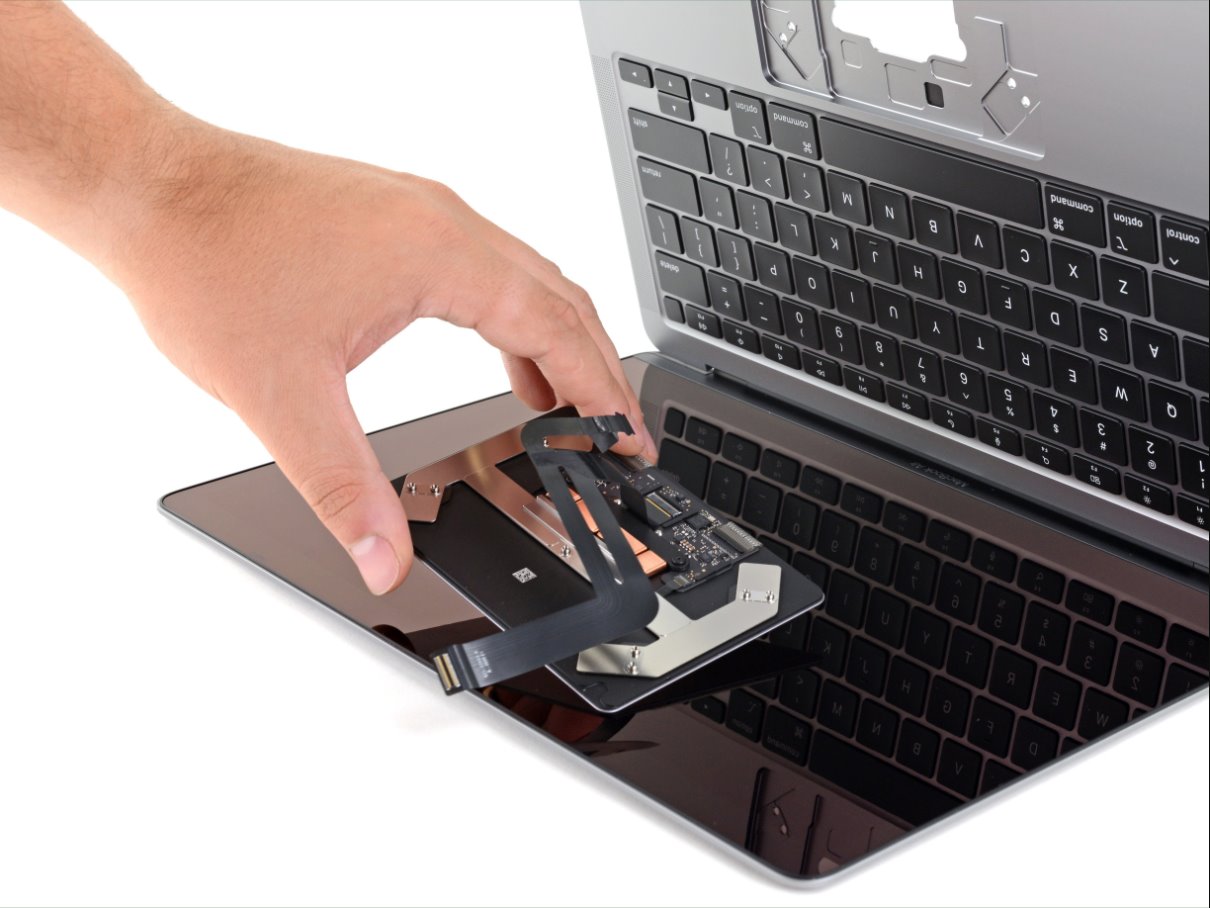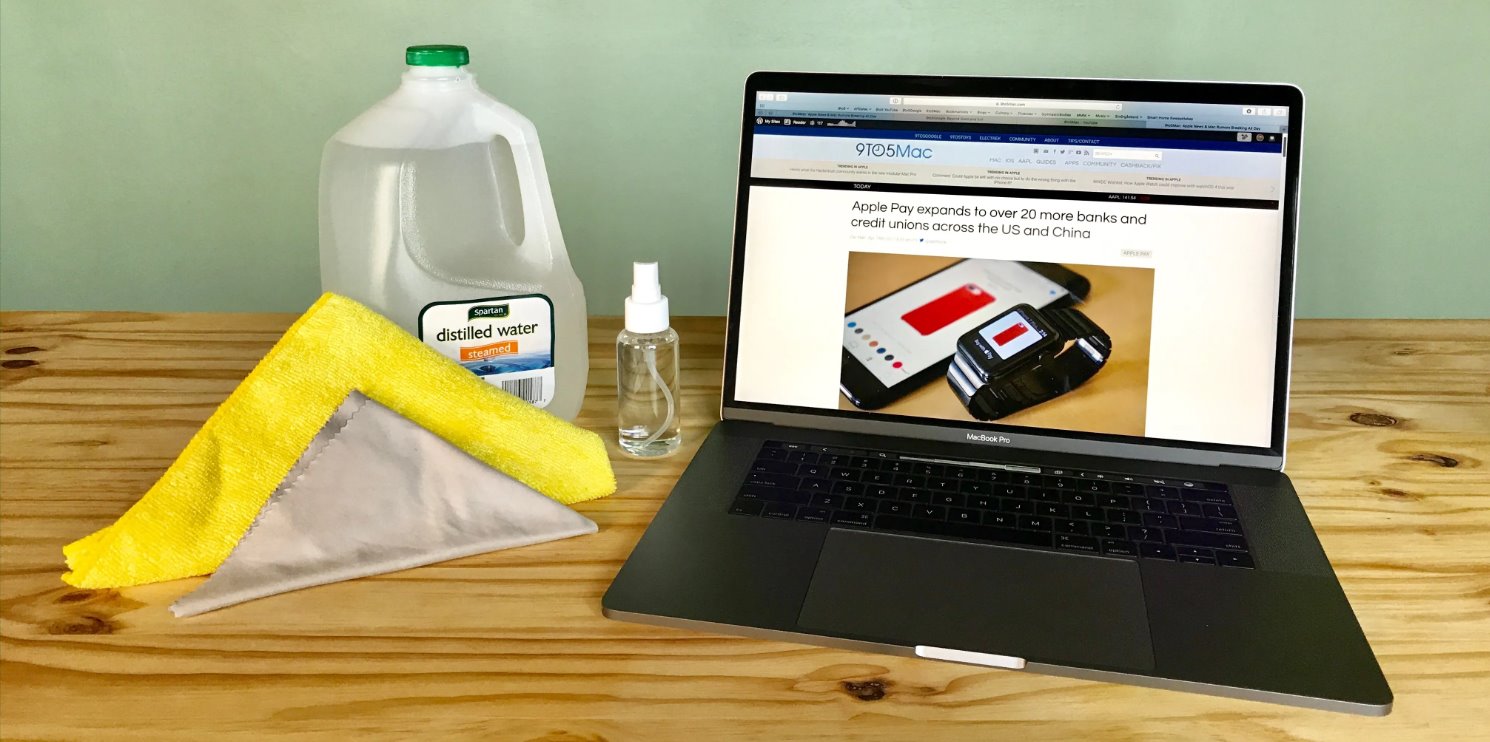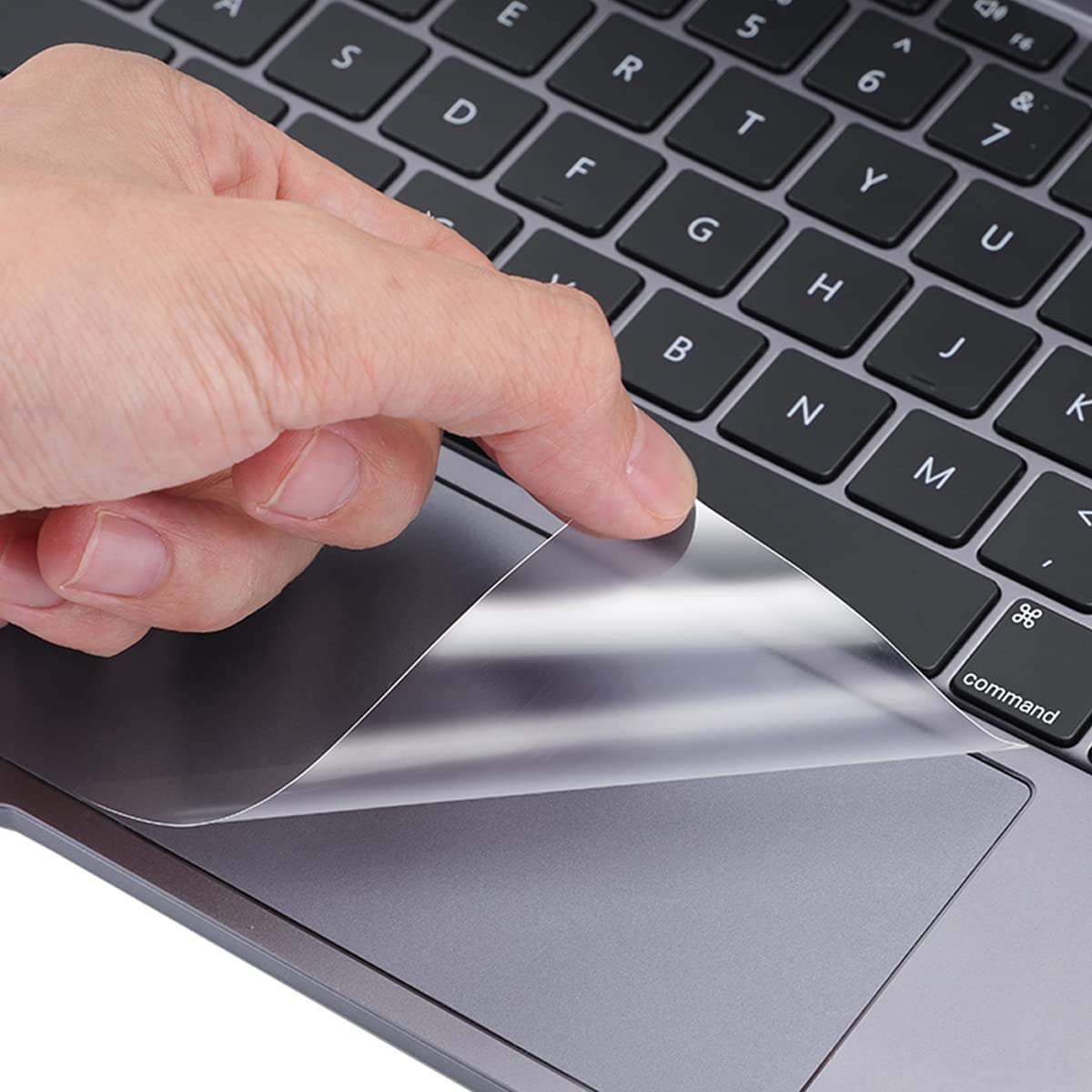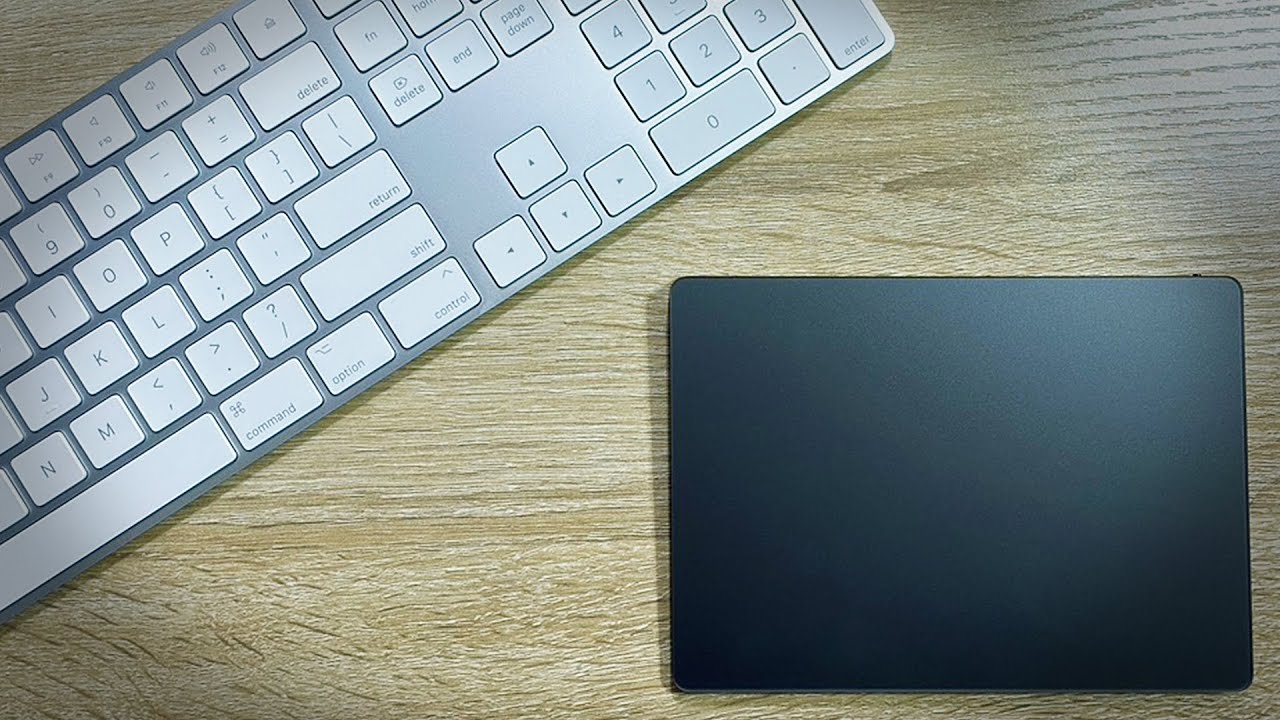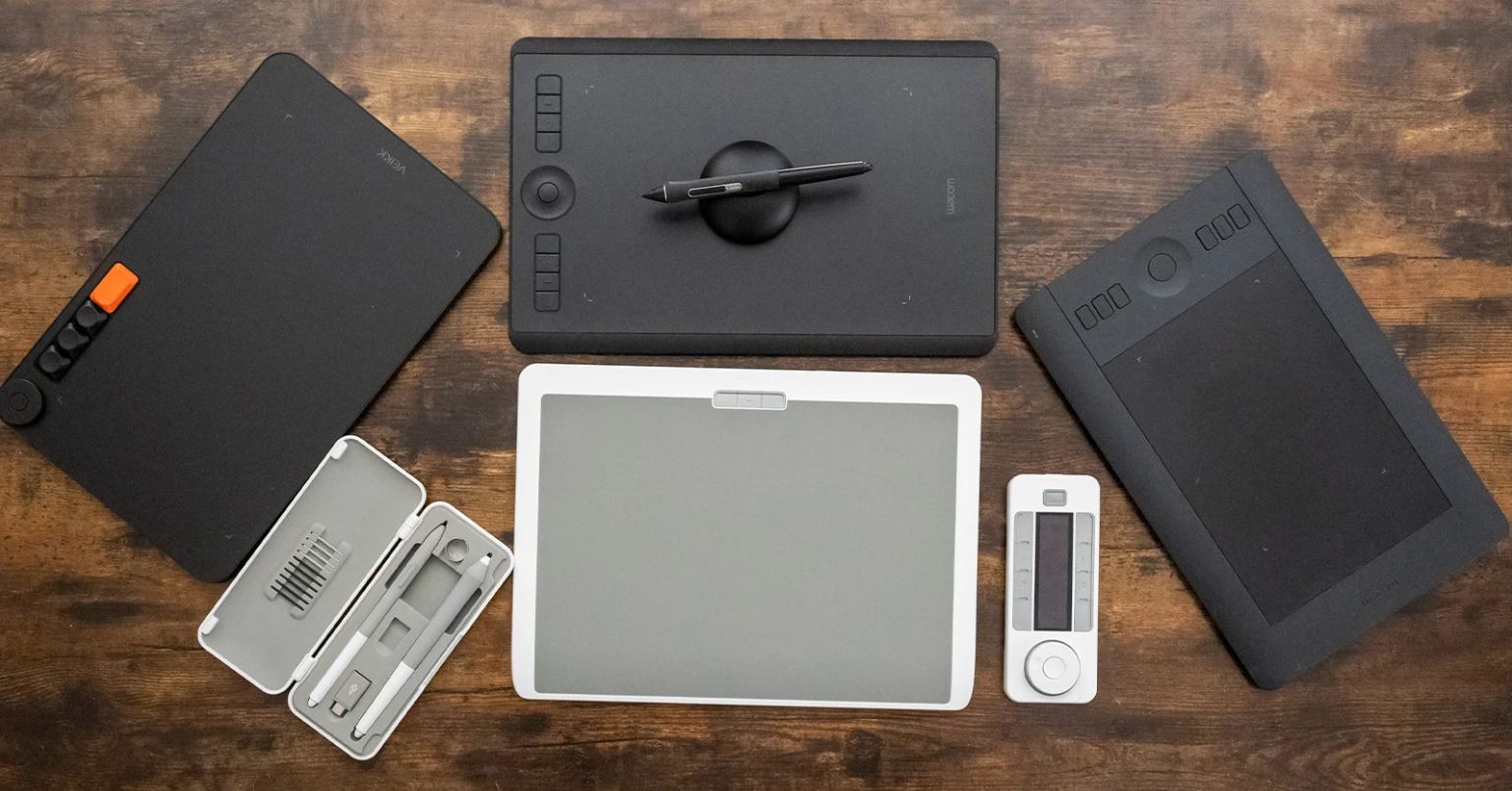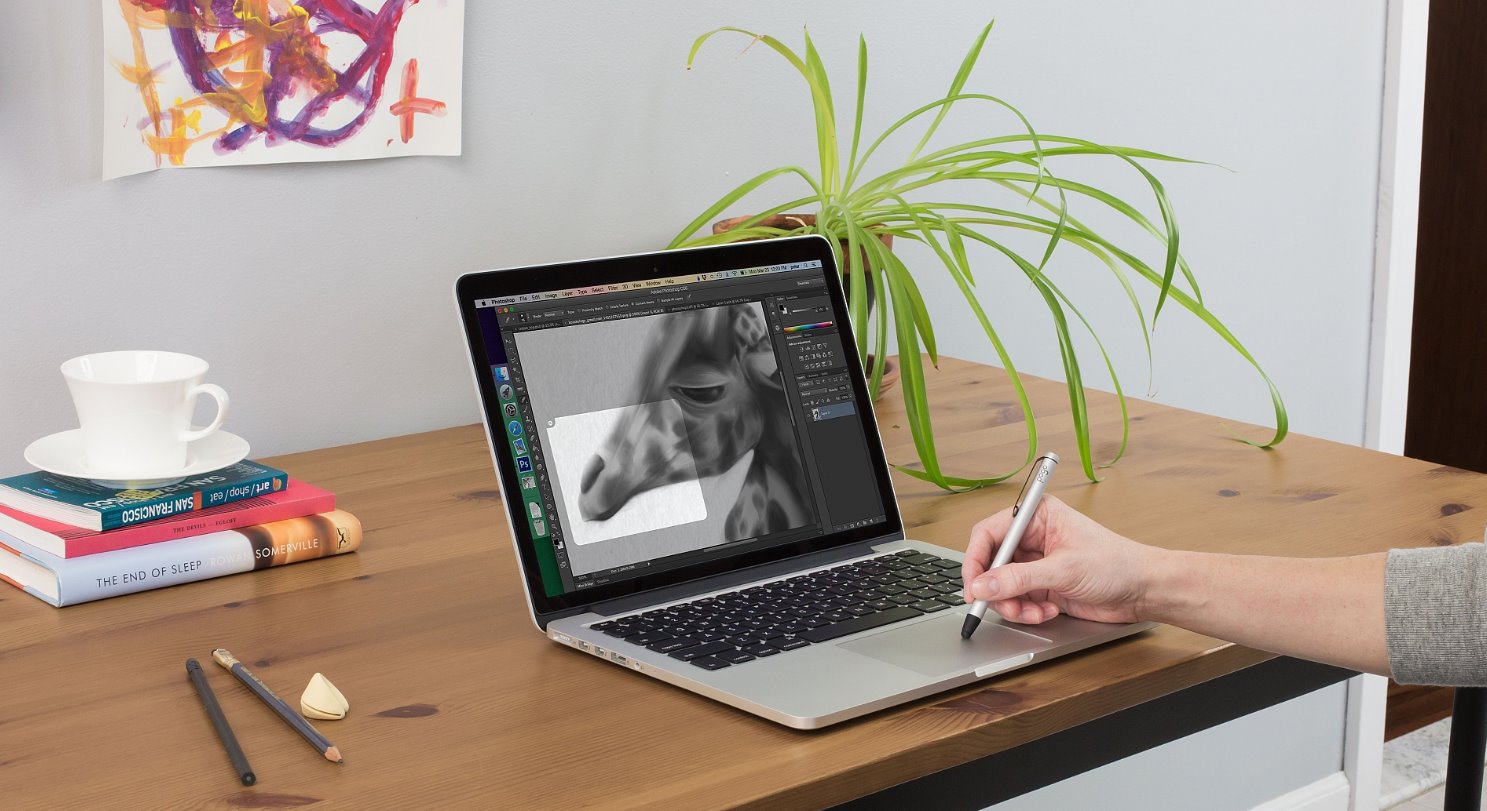Introduction
Have you ever experienced the frustration of your trackpad freezing on your Mac? It can be incredibly annoying when you’re in the middle of an important task or trying to navigate your computer, and suddenly, your trackpad becomes unresponsive. But why does this happen? What could be causing your trackpad to freeze?
There are several possible reasons for a trackpad freezing on a Mac. In this article, we will explore some of the common causes and provide troubleshooting steps to help you resolve the issue. Whether you are using a MacBook, MacBook Air, or MacBook Pro, these tips can be helpful in getting your trackpad back to its normal functioning state.
Before diving into the troubleshooting steps, it’s important to note that sometimes a trackpad freeze could be indicative of a more serious underlying issue. If you’ve recently dropped your Mac or spilled liquid on it, it’s best to consult with a professional technician for a thorough inspection and repair, if necessary.
Possible Causes of Trackpad Freezing on Mac
There can be several reasons why your trackpad keeps freezing on your Mac. Understanding these causes can help you troubleshoot the issue more effectively. Here are some of the common culprits:
- System Updates: Sometimes, an outdated or faulty operating system can lead to trackpad freezing. Installing system updates can often resolve compatibility issues and improve the stability of your trackpad.
- Software Conflicts: Conflicting software or incompatible applications can cause your trackpad to freeze. If you’ve recently installed new software or updated an existing application, try uninstalling or disabling it to see if that resolves the issue.
- Overheating: Excessive heat can cause your Mac’s components to malfunction, including the trackpad. Check if your device feels unusually hot and ensure proper ventilation to prevent overheating.
- Hardware Issues: A faulty or damaged trackpad is another potential cause of freezing. If other troubleshooting steps fail to resolve the issue, it may be necessary to visit an authorized service center to have your hardware examined and repaired.
- Dust or Debris on the Trackpad: Accumulated dust or debris on the trackpad surface can interfere with its functionality, causing freezing or erratic behavior. Regularly cleaning your trackpad can help prevent these issues.
It’s essential to identify the underlying cause of your trackpad freeze, as the appropriate troubleshooting steps can vary depending on the specific issue. In the following sections, we will walk you through some potential solutions to rectify the trackpad freezing problem on your Mac.
System Updates
One of the first steps to take when troubleshooting a trackpad freezing issue on your Mac is to ensure that your operating system is up to date. System updates often include bug fixes, stability improvements, and compatibility enhancements that can address trackpad-related issues.
To check for updates, follow these steps:
- Click on the Apple menu in the top-left corner of your screen.
- Select “System Preferences” from the drop-down menu.
- In the System Preferences window, click on “Software Update.”
- If an update is available, click on the “Update Now” button to initiate the installation.
After installing the updates, restart your Mac and check if the trackpad freezing issue persists. In many cases, system updates can resolve compatibility issues and improve the overall stability of your trackpad.
If your Mac is already up to date or installing the updates did not resolve the problem, you may need to explore other potential causes and solutions.
Remember, it’s a good practice to regularly check for software updates to ensure that your system is running the latest version. This not only helps in preventing trackpad freezing but also ensures that your Mac is equipped with the latest security patches and features.
Software Conflicts
Software conflicts can often cause trackpad freezing issues on your Mac. Incompatible or conflicting applications can interfere with the normal functioning of the trackpad, leading to unresponsiveness or erratic behavior. Here are some steps you can take to address software conflicts:
Uninstall Recently Installed Software:
If you’ve recently installed new software before experiencing trackpad issues, try uninstalling it to see if that resolves the problem. To uninstall an application, follow these steps:
- Open the “Applications” folder on your Mac.
- Locate the application you want to uninstall.
- Drag and drop the application into the Trash.
- Empty the Trash to complete the uninstallation process.
After uninstalling the application, restart your Mac and check if the trackpad freezing issue persists.
Disable Extension/Safari Plug-ins:
If you’re experiencing trackpad freezing specifically while using web browsers, such as Safari, it’s worth checking if any extensions or plug-ins may be causing conflicts. Follow these steps to disable extensions in Safari:
- Open Safari.
- Click on “Safari” in the top menu and select “Preferences.”
- Go to the “Extensions” tab.
- Uncheck the box next to each extension to disable them.
If you’re using a different browser, refer to their respective settings to disable extensions or plug-ins.
Repair Disk Permissions:
Repairing disk permissions can help resolve conflicts that may be causing trackpad freezing issues. To repair disk permissions, follow these steps:
- Open the “Disk Utility” application, which can be found in the “Utilities” folder within the “Applications” folder.
- Select your Mac’s startup disk from the list on the left side of the Disk Utility window.
- Click on the “First Aid” tab.
- Click on the “Repair Disk Permissions” button.
Allow the process to complete, and then restart your Mac to see if the trackpad freezing issue has been resolved.
If software conflicts are the cause of the problem, one of these solutions should help alleviate the issue. However, if the problem persists, continue exploring other possible causes and troubleshooting steps.
Overheating
Overheating can cause various issues on a Mac, including trackpad freezing. When your Mac becomes excessively hot, it can lead to system instability, affecting the performance of the trackpad. Here are some steps you can take to address overheating:
Check for Obstructed Air Vents:
Ensure that the air vents on your Mac are not blocked or obstructed. Dust, debris, or objects covering the vents can restrict airflow and contribute to overheating. Use a soft brush or compressed air to clean out any dust or debris from the vents.
Use Your Mac on a Hard Surface:
Avoid using your Mac on soft surfaces, such as bedding or pillows, as they can block the airflow and lead to overheating. Instead, use your Mac on a hard and flat surface, such as a desk or table, which allows for better ventilation.
Use Cooling Pads or External Fans:
If you frequently experience overheating issues, consider investing in a cooling pad or an external fan to help dissipate heat. These accessories can provide additional airflow and prevent your Mac from overheating.
Quit Resource-Intensive Applications:
Resource-intensive applications, especially those running in the background, can strain your Mac’s processor, leading to increased heat generation. Quitting unnecessary applications can help reduce the strain on your Mac and alleviate overheating issues.
Adjust Energy Saver Settings:
Optimizing your Mac’s energy saver settings can also help prevent overheating. To adjust the settings:
- Click on the Apple menu in the top-left corner of your screen.
- Select “System Preferences” from the drop-down menu.
- In the System Preferences window, click on “Energy Saver.”
- Make sure the “Automatic graphics switching” option is enabled.
This setting allows your Mac to switch between integrated and dedicated graphics, depending on the need, reducing the overall heat generated.
By taking these precautionary measures, you can significantly reduce the chances of your Mac overheating, thereby minimizing trackpad freezing issues. However, if the problem persists, it may be necessary to explore other potential causes and troubleshooting steps.
Hardware Issues
If you’ve tried the previous troubleshooting steps and your trackpad continues to freeze on your Mac, it’s possible that there may be an underlying hardware issue. Hardware problems can cause trackpad malfunctions, rendering it unresponsive or erratic. Here are some signs that indicate a possible hardware issue:
- The trackpad is unresponsive even after restarting your Mac or performing software troubleshooting.
- The trackpad behaves erratically, registering unintended clicks or movements.
- There are visible physical damages, such as cracks or dents, on the trackpad.
If you exhibit any of these symptoms, it’s recommended to have your Mac inspected by an authorized service center or an Apple-certified technician. They have the expertise to diagnose and repair hardware issues accurately.
The technician will thoroughly examine your Mac’s trackpad and other components, identifying any faults or damages. Depending on the severity of the issue, they may suggest repairing or replacing the trackpad to restore its functionality.
Note that if your Mac is under warranty or covered by AppleCare, it’s advisable to contact Apple Support or visit an Apple Store to take advantage of the available support options. They can guide you through the process and ensure that your Mac receives the necessary repairs.
It’s essential not to attempt self-repair or disassemble your Mac unless you have the required technical expertise. Mishandling the hardware can potentially worsen the issue or void the warranty.
By seeking professional assistance, you can address hardware-related trackpad freezing issues effectively and ensure the longevity of your Mac’s performance.
Dust or Debris on the Trackpad
If your trackpad keeps freezing on your Mac, it’s possible that accumulated dust or debris on the trackpad surface is interfering with its functionality. Over time, particles can gather on the trackpad, causing it to become unresponsive or behave erratically. Fortunately, cleaning the trackpad is a simple and effective solution. Here’s how you can do it:
1. Shut down your Mac:
Before cleaning, make sure to shut down your Mac completely to avoid any accidental inputs or damage during the process.
2. Prepare cleaning materials:
Gather a soft microfiber cloth or a lint-free cloth and a small amount of isopropyl alcohol or screen cleaning solution. It’s important to use a gentle cleaning solution to prevent any damage to the trackpad surface.
3. Dampen the cloth:
Slightly dampen the cloth with the cleaning solution. Make sure it’s not excessively wet, as moisture can seep into the trackpad and cause further issues.
4. Gently clean the trackpad:
Using the damp cloth, gently wipe the trackpad surface in circular motions or back-and-forth strokes. Apply light pressure to remove any dirt or debris that may be causing the freezing issue. Avoid pressing too hard or using abrasive materials that could scratch the trackpad surface.
5. Dry the trackpad:
After cleaning, use a dry part of the cloth to gently dry the trackpad. Ensure that there is no moisture remaining on the trackpad before turning on your Mac.
6. Power up your Mac:
Once the trackpad is completely dry, power up your Mac and check if the freezing issue has been resolved. The cleaning process should help improve the responsiveness and eliminate any freezing caused by dust or debris.
Performing this cleaning routine regularly can help prevent trackpad issues and maintain its optimal performance. However, if the freezing problem persists after cleaning, you may need to explore other troubleshooting steps or seek professional assistance.
Troubleshooting Steps
If your trackpad continues to freeze on your Mac despite trying the previous solutions, there are additional troubleshooting steps you can take to address the issue. Here are some recommended steps to troubleshoot trackpad freezing:
Restart Your Mac:
Simply restarting your Mac can sometimes resolve temporary glitches and refresh the system, improving the trackpad’s functionality. Click on the Apple menu and select “Restart” to restart your Mac and check if the trackpad freezing issue persists afterward.
Reset the SMC (System Management Controller):
The SMC controls various hardware functions on your Mac, including the trackpad. Resetting the SMC can resolve trackpad freezing problems caused by certain system-level issues. The steps to reset the SMC vary depending on your Mac model. Refer to the Apple Support website or consult the user manual for detailed instructions on how to reset the SMC for your specific Mac.
Check for Software Updates:
Ensuring that your Mac’s operating system and installed applications are up to date can help resolve compatibility issues that may be causing the trackpad to freeze. Go to the “Software Update” section in System Preferences and check for any available updates. Install them and restart your Mac to see if the problem is resolved.
Close Unnecessary Applications:
Running multiple applications simultaneously, especially resource-intensive ones, can strain your Mac’s performance and lead to trackpad freezing. Close any unnecessary applications and only keep essential ones running to reduce the load on your system.
Clean the Trackpad:
As mentioned earlier, accumulated dust or debris on the trackpad surface can cause freezing. Regularly clean your trackpad using a soft cloth and a gentle cleaning solution, as outlined in the earlier section. A clean trackpad can ensure optimal responsiveness and minimize freezing issues.
By following these troubleshooting steps, you can effectively diagnose and resolve trackpad freezing problems on your Mac. However, if the issue persists even after trying these steps, it may be necessary to consult with a professional technician or contact Apple Support for further assistance.
Restarting Your Mac
One of the simplest yet effective troubleshooting steps for a trackpad freezing issue on your Mac is to restart the system. This method can help resolve temporary glitches and refresh the system, including the trackpad functionality. Here’s how you can restart your Mac:
- Save any ongoing work and close all the applications.
- Click on the Apple menu in the top-left corner of your screen.
- Select “Restart” from the drop-down menu.
- Confirm the restart action if prompted.
Wait for your Mac to shut down and power up again. Once it boots up, check if the trackpad freezing issue has been resolved. Often, a simple restart can rectify minor software or system glitches that may have been causing the problem.
If the trackpad continues to freeze after restarting your Mac, consider trying other troubleshooting steps mentioned in this article to further examine and resolve the issue.
It’s worth noting that restarting your Mac is a useful solution for immediate troubleshooting, but it may not address underlying causes of trackpad freezing that persist over time. If the problem reoccurs frequently, it’s advisable to explore other potential causes and take additional steps to prevent trackpad issues in the future.
By incorporating regular restarts into your Mac usage routine, you can help maintain the overall performance and reliability of your device, reducing the occurrence of trackpad freezing and other related issues.
Resetting the SMC (System Management Controller)
If restarting your Mac did not resolve the trackpad freezing issue, another troubleshooting step to consider is resetting the SMC. The System Management Controller is responsible for controlling various hardware functions on your Mac, including the trackpad. Resetting the SMC can help resolve certain system-level issues that may be causing the problem. Here’s how you can reset the SMC on different Mac models:
MacBooks with Non-Removable Battery:
- Shut down your Mac.
- Connect your Mac to a power source.
- Press and hold the Shift + Control + Option keys on the left side of the keyboard.
- While holding these keys, press and hold the power button for about 10 seconds.
- Release all the keys and the power button simultaneously.
- Press the power button to turn on your Mac.
MacBooks with Removable Battery:
- Shut down your Mac.
- Remove the battery from the back of your MacBook.
- Press and hold the power button for about 5 seconds.
- Release the power button.
- Reinsert the battery.
- Press the power button to turn on your Mac.
Mac Desktops:
- Shut down your Mac.
- Disconnect the power cord from your Mac.
- Wait for about 15 seconds.
- Reconnect the power cord.
- Wait for a few seconds and then press the power button to turn on your Mac.
After resetting the SMC, allow your Mac to boot up normally. Check if the trackpad freezing issue has been resolved. If the problem persists, continue exploring other troubleshooting steps or seek professional assistance.
Note that resetting the SMC will not affect your data or settings, but it can address hardware-related issues that may cause trackpad freezing or other system problems. Resetting the SMC is a safe and widely used troubleshooting technique, but if you are uncertain or uncomfortable performing the procedure, it’s recommended to consult the Apple Support website or contact Apple Support directly.
Checking for Software Updates
Keeping your Mac’s software up to date is crucial for optimal performance and resolving various issues, including trackpad freezing. Outdated software or missing critical updates can lead to compatibility issues that affect the trackpad’s functionality. Therefore, regularly checking for and installing software updates can help address these problems. Here’s how to check for software updates on your Mac:
- Click on the Apple menu in the top-left corner of your screen.
- Select “System Preferences” from the drop-down menu.
- In the System Preferences window, click on “Software Update.”
- Your Mac will check for available updates. If updates are found, they will be displayed.
- Click on the “Update Now” button to install all available updates.
- Follow the on-screen instructions to complete the update installation process.
After installing the software updates, restart your Mac and check if the trackpad freezing issue persists. In many cases, installing the latest updates can resolve compatibility issues and improve the overall stability of your system, including the trackpad functionality.
It’s important to note that some updates may require your Mac to restart multiple times for the changes to take effect. Therefore, ensure that you save any ongoing work before initiating the update process.
Regularly checking for software updates is considered best practice to ensure your Mac is equipped with the latest security patches, bug fixes, and performance enhancements. Implementing this habit will not only help troubleshoot trackpad issues but also ensure the overall health and reliability of your Mac.
If you continue to experience trackpad freezing after updating your software, you may need to explore other troubleshooting steps or seek additional assistance from Apple Support or an authorized service center.
Closing Unnecessary Applications
Running multiple applications simultaneously can consume system resources and potentially lead to trackpad freezing on your Mac. Closing unnecessary applications can help alleviate this issue by reducing the strain on your Mac’s processor and memory. Here’s what you can do:
Identify and Close Unnecessary Applications:
Take a moment to evaluate the applications currently running on your Mac. Identify any applications that you are not actively using or that are resource-intensive. These may include web browsers with multiple tabs open, graphics-intensive programs, or background processes that you can temporarily suspend.
Close Applications Using the Dock:
The simplest way to close applications is through the Dock, located at the bottom of your screen. Find the application’s icon in the Dock and right-click on it. From the context menu that appears, select “Quit” or “Close.” Alternatively, you can click and hold on the application’s icon until a pop-up menu appears, and then choose “Quit” or “Close.”
Close Applications Using the App Switcher:
You can also use the App Switcher to close applications. Press the Command + Tab keys simultaneously to access the App Switcher. While holding down the Command key, press the Tab key multiple times until you reach the application you want to close. Once you’ve highlighted the application, release both keys and press the Q key to quit the selected application.
Use Activity Monitor:
If you’re unsure which applications are consuming system resources, you can use the Activity Monitor utility on your Mac. To access Activity Monitor, follow these steps:
- Open Finder from the Dock.
- Navigate to “Applications” > “Utilities” > “Activity Monitor.”
- In the Activity Monitor window, you can view a list of running processes and their resource usage.
- Select an application that you want to close and click on the “X” button in the upper-left corner of the window.
By closing unnecessary applications, you can free up system resources, allowing your Mac to allocate more processing power to essential tasks and reducing the chances of trackpad freezing. This simple step can have a significant impact on overall system performance.
If closing applications does not resolve the trackpad freezing issue, you may need to explore other troubleshooting steps or seek further assistance from Apple Support or an authorized service center.
Cleaning the Trackpad
Accumulated dust or debris on the trackpad can interfere with its functionality, leading to trackpad freezing or erratic behavior on your Mac. Regularly cleaning the trackpad surface is important to ensure optimal responsiveness. Here’s how you can clean the trackpad:
1. Shut down your Mac:
Before cleaning the trackpad, make sure to shut down your Mac completely to avoid any accidental inputs or damage during the process.
2. Prepare cleaning materials:
Gather a soft, lint-free cloth, such as a microfiber cloth, and a small amount of isopropyl alcohol or a screen cleaning solution. These cleaning solutions are typically safe to use on trackpad surfaces.
3. Dampen the cloth:
Slightly dampen the cloth with the cleaning solution. Be careful not to saturate it with excessive moisture, as you don’t want any liquid to seep into the trackpad.
4. Clean the trackpad gently:
Using the damp cloth, gently wipe the trackpad surface in circular motions or back-and-forth strokes. Apply light pressure to remove any dirt, fingerprints, or debris that may be causing the trackpad freezing issue. Avoid using excessive force or abrasive materials that could damage the trackpad surface.
5. Dry the trackpad:
After cleaning, use a dry part of the cloth to gently dry the trackpad. Make sure there is no moisture left on the trackpad before turning on your Mac.
6. Power up your Mac:
Once the trackpad is completely dry, power up your Mac and check if the trackpad freezing issue has been resolved. Cleaning the trackpad surface can often improve responsiveness and eliminate freezing caused by dust or debris.
Regularly cleaning your trackpad is important for maintaining its optimal functionality. Aim to clean it at least once a month, or more frequently if you notice that it attracts dirt or becomes unresponsive. By incorporating this simple maintenance routine, you can help prevent trackpad freezing issues and ensure a smooth and reliable user experience.
If the trackpad freezing problem persists even after cleaning, you may need to explore other troubleshooting steps or consult Apple Support for further assistance.
Conclusion
Dealing with a freezing trackpad on your Mac can be frustrating, but by understanding the potential causes and implementing the appropriate troubleshooting steps, you can often resolve the issue. In this article, we explored common causes of trackpad freezing and provided various solutions to help you troubleshoot and address the problem. From checking for system updates to cleaning the trackpad and closing unnecessary applications, these steps can help resolve trackpad freezing caused by software conflicts, overheating, hardware issues, dust, and more.
Remember to start with the simplest solutions, such as restarting your Mac and checking for software updates. If the problem persists, try more advanced troubleshooting steps, such as resetting the SMC or cleaning the trackpad surface. It’s always a good idea to perform routine maintenance to keep your Mac in optimal condition, which includes regular cleaning and software updates.
If you have tried all the listed solutions and the trackpad freezing issue still persists, it may be necessary to seek professional help. Authorized service centers or Apple Support can provide further guidance and assistance in diagnosing and repairing any potential hardware issues.
Keep in mind that prevention is often the best approach. Avoid spilling liquids on your Mac, protect it from excessive heat, and keep the trackpad clean to minimize the chances of encountering trackpad freezing issues in the future.
By following these troubleshooting steps and maintaining good practices, you can overcome trackpad freezing problems and ensure a smooth and efficient experience using your Mac.







